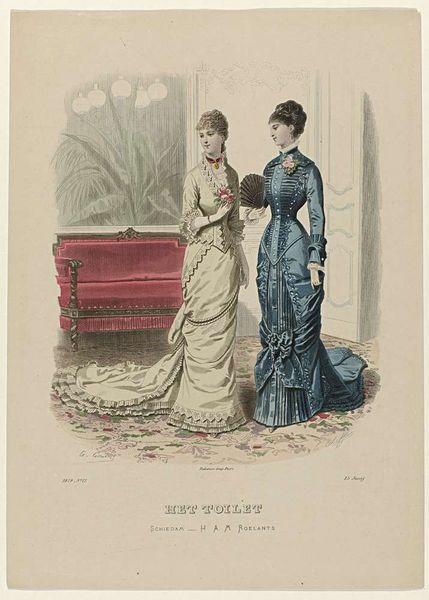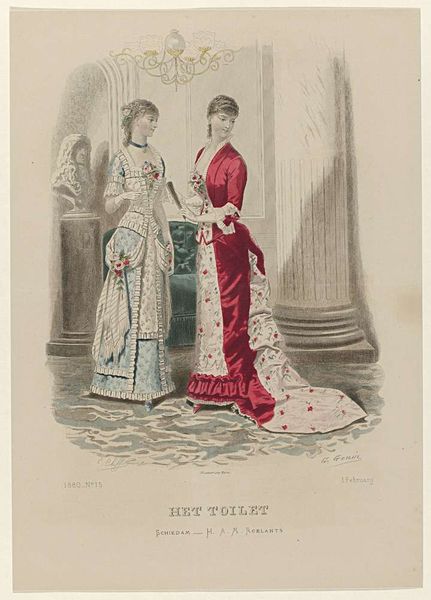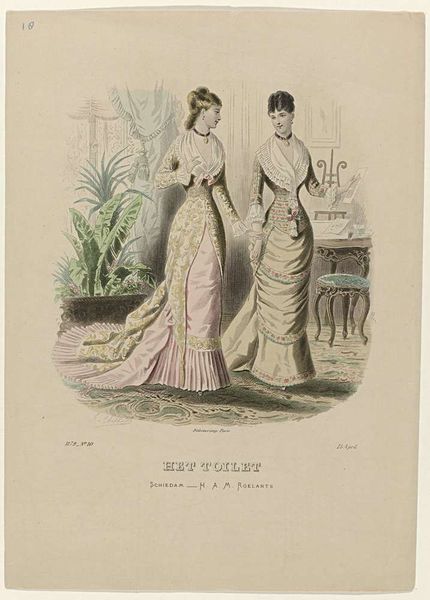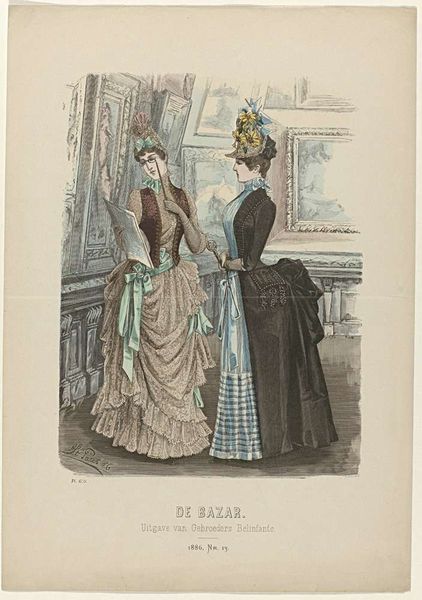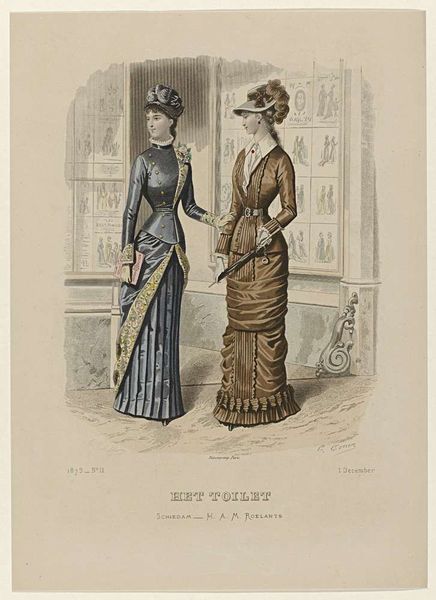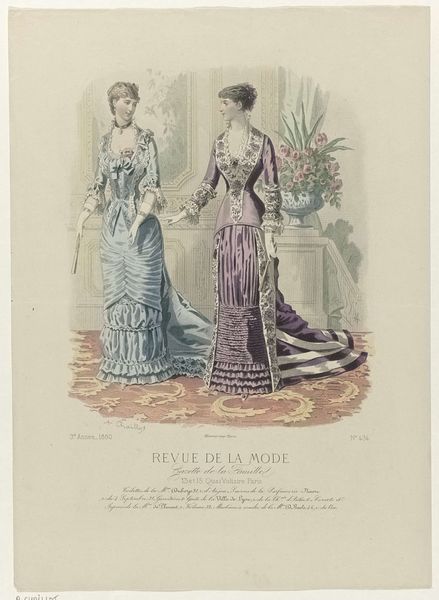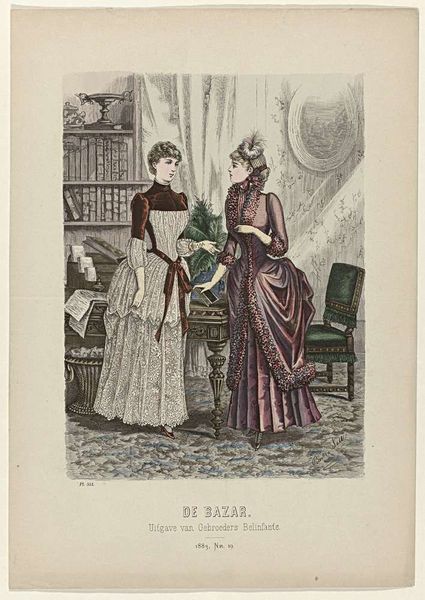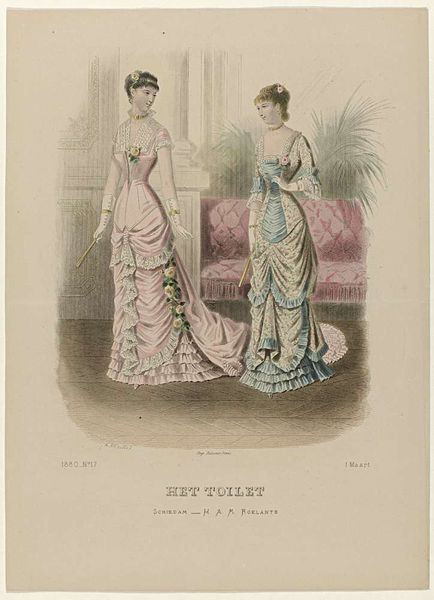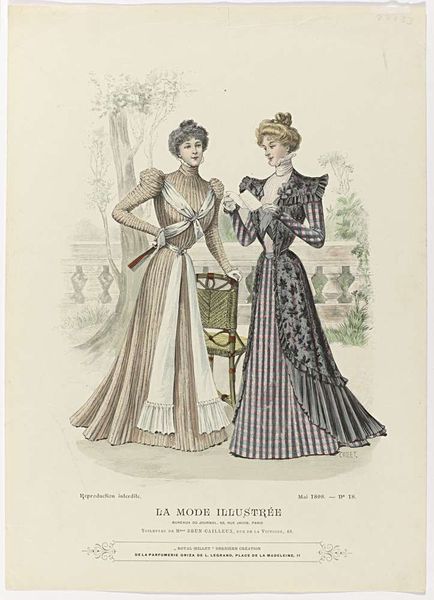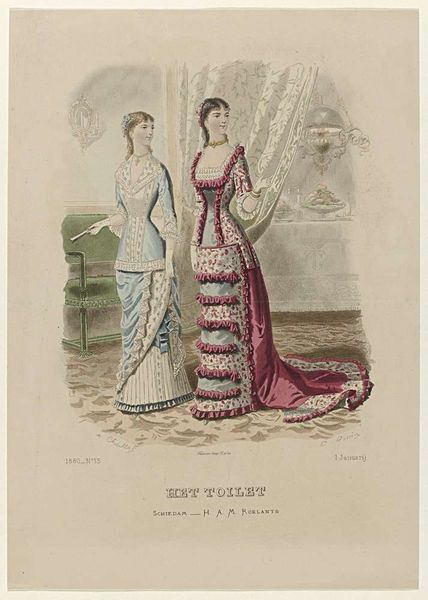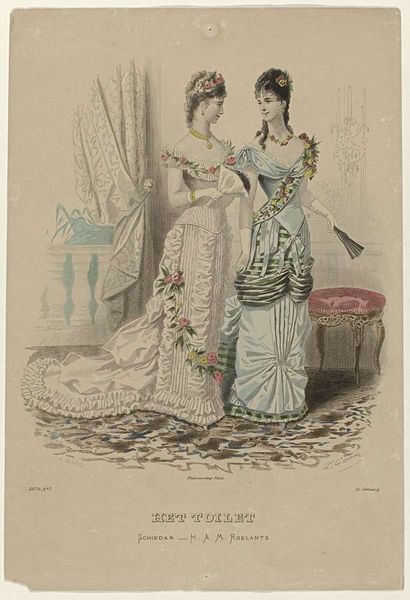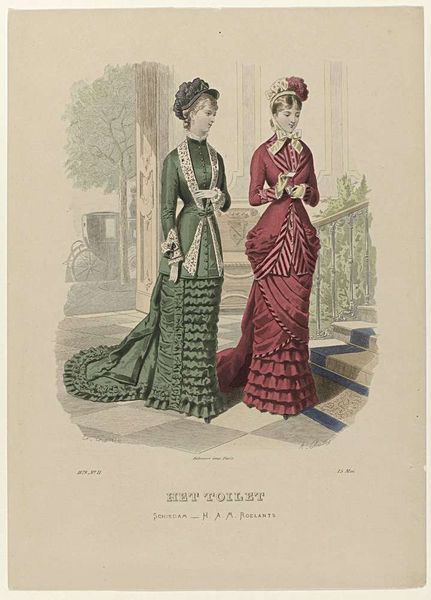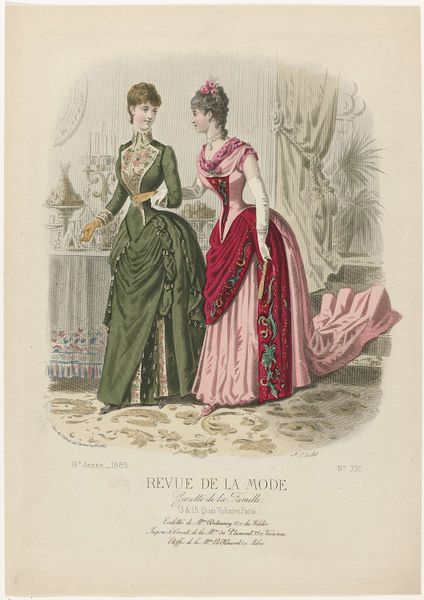
Dimensions: height 363 mm, width 262 mm
Copyright: Rijks Museum: Open Domain
Editor: This is "Het Toilet, 1 juli 1879, No. 1", created in 1879 by A. Chaillot. It seems to be a drawing or print, perhaps a watercolour illustration. I'm immediately struck by how the dresses themselves are the focal point. The colours and textures are really captivating. What do you see when you look at it? Curator: The formal elements are quite prominent. Note the vertical lines created by the folds of the fabric, counterbalanced by the horizontal emphasis in the details, like the frills and the embellishments on the bodice of the left figure. Do you see how the artist plays with symmetry, almost but not quite achieving it, adding visual interest? Editor: Yes, the almost-symmetry is intriguing. The dresses share some similarities in construction but are distinctly different in detail and colour palette. What do you make of that contrast? Curator: Observe how the artist creates depth through overlapping forms. The first figure subtly blends with a blurry flower decoration, while the other overlaps a railing, but remains separate. This adds dimension to the picture. The medium contributes with delicate colours. Editor: That’s a great point, the flower pot is quite an interesting blurry detail, and allows the figures to be perceived at different plans. This reminds me, How does materiality of printmaking itself affect your interpretation of the subject matter depicted in the illustration? Curator: Well, consider how printmaking can produce multiples, in contrast to a unique painting. Does this imply a more widespread interest in fashion, accessibility, maybe even a democratizing impulse? The materiality nudges us towards questions about consumer culture. Editor: That's a fascinating way to think about it, as a commentary of consumer culture. I'd never considered how the medium itself could contribute to that reading. Curator: Precisely. By examining the work through its formal properties, like colour, line, and composition and medium, we can find how it is embedded into an ecosystem of aesthetics. Editor: That really enriches my understanding, seeing how the artistic choices, even in what seems like a simple fashion plate, contribute to broader cultural conversations. Thank you.
Comments
No comments
Be the first to comment and join the conversation on the ultimate creative platform.
